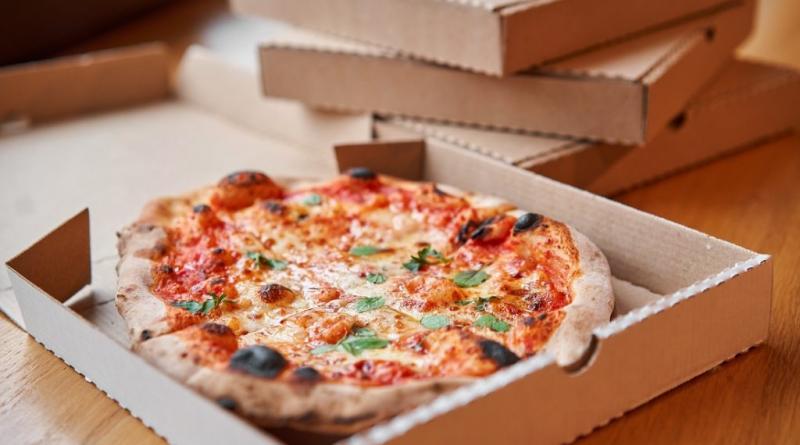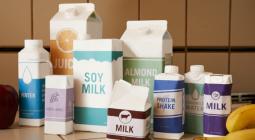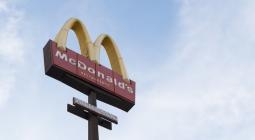One Large Pie, Extra Sustainability: Dispelling Pizza Box Recycling Myths.

By Jeff Chalovich, chief commercial officer and president, Corrugated Packaging, WestRock
Whether delivery or takeout, as a weekday reprieve from cooking or festive food for a weekend celebration, people love their pizza. Over the course of a year in the U.S., people consume an estimated 3 billion pizzas. And during February’s Super Bowl game, Domino’s pizza in the U.S. typically sells around 2 million pizzas. The love for pizza has longevity, too. According to a Reader’s Digest poll, the single food that most Americans would want to eat for the rest of their lives is pizza. While we can debate Hawaiian versus pepperoni and turn our noses up at anchovies, there’s no agreeing to disagree on this: Pizza boxes can be recycled. There’s proof.
The Cheese and Grease Study
Mired in myth, and confused by cheese and grease, people have been burying the pizza box in their trash bins, assuming it cannot be recycled. Allow me to set the record straight – it can!
In 2020, my company, WestRock, conducted a Grease and Cheese study that concluded normal amounts of grease and residual cheese do not negatively affect the manufacturing of new products from this recycled fiber. Why does this matter? Pizza boxes are made of high-quality corrugated paper, which can be recycled at least seven times, according to the American Forest and Paper Association (AF&PA). That means we could potentially recover and reuse upwards of 600,000 tons of corrugated board a year!
In 2019, to help dispel the myth that corrugated pizza boxes are not recyclable, WestRock also commissioned Resource Recycling Systems (RSS) to conduct a study of the availability of recycling programs in the U.S. for corrugated pizza boxes. This study was reviewed and endorsed by member companies of the AF&PA, who validated our findings.
To further encourage Americans to learn more, WestRock, in partnership with Domino’s, the largest pizza company in the world based on retail sales, launched Recycle My Pizza Box — a hub of information about proper pizza box recycling where visitors can input their ZIP code to find out about recycling in their municipality.

Innovating and Increasing Awareness
Circularity starts at the beginning of a product’s life cycle. At WestRock, we continue to innovate fiber-based packaging alternatives and automated solutions that leverage fiber-based materials that can be right-sized. From Coca-Cola’s CanCollar that gives soda’s plastic 6-pack ring a sustainable fiber-based makeover, to EnShield Natural Kraft paper for foodservice packaging that resists grease and oil stains by providing the same protection as poly-coating without the plastic, to our newest automation technology for the fast-growing food bowl segment, CP eMerge Combo (a fiber-based alternative to plastic bowls), we are innovating with a circular economy top of mind at every step of the way, especially in the foodservice space where sustainability myths abound.
Innovation is only half the battle. Information, on the other hand, just might be one of our most powerful tools in progressing toward a more circular economy.
Forward Momentum in Facilitating a Circular Economy
At WestRock, we will continue to conduct studies and share our findings to help people make more informed, more sustainable choices. Of course, change takes time, but incremental progress reduces our collective impact on the environment. I’m excited that just two months after we published our study, it reached one woman in Anchorage, Alaska. Impressed by the study’s findings, Suzanna Caldwell, recycling coordinator for Municipality of Anchorage Department of Solid Waste Services, worked with her local recycling processor and waste hauler to accept pizza boxes for recycling starting in August 2020. Considering that the highest-grossing single-unit independent pizzeria in the U.S. is reportedly Moose’s Tooth Pub and Pizzeria in Anchorage, Alaska — and it’s also currently ranked among the top 10 pizza places in the nation — we’re off to a good start.
What You Can Do
So, what can you do? How can you help in these efforts? For starters, share the findings of the grease and cheese study the next time you share a pie (virtually or in person) to dispel the myth. And it’s not just pizza-loving people who are confused here. In some areas around the country, you may find that inputting your ZIP code at Recycle My Pizza Box yields the message: “Implicitly accepts pizza boxes.” However, this all too often conflicts with guidance on municipal recycling websites, which can mistakenly put pizza boxes in the “no” pile.
By sharing the study results with municipal recycling departments, and politely pointing out the inconsistencies in their communications around what cannot — and can — be recycled, we can improve residential recycling rates of pizza boxes.
Want to do more? Send a letter to your local newspaper and legislators, linking them to the study so they can use the information to inform local residential recycling collection rules. Want them to really pay attention, deliver a pizza with your message for a delicious and impactful statement. As we’ve seen in Anchorage, one person can make a difference.
25 February 2021
Earth911




